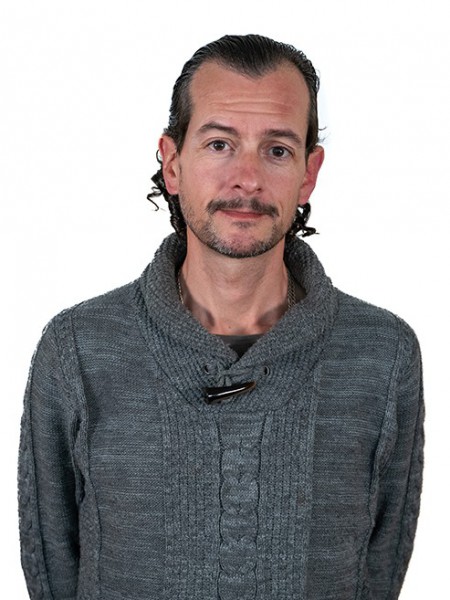abstract
The growth of a methane hydrate seed within a silica slit pore of fixed width has been studied using All Atom Molecular Dynamics (AA-MD). An AA force field has been used to describe the molecules of the solid silica substrate, with a-quartz crystalline structure. The crystallisation of hydrates in confined geometries is not well understood yet, and the objective of this work is to study the hydrate growth inside a silica pore using molecular simulation. Both NVT and NpT ensembles were used in the AA-MD simulations to analyse the hydrate growth from an initial seed. Results showed that the boundary conditions imposed by the nanometric slit pore yielded a hydrate with structural defects, filling the accessible space between the silica walls. The water molecules which were not incorporated to the initial seed hydrate formed a high density water layer trapped between the silica walls and the crystallised hydrate. These results provide an interesting insight into the hydrate crystallisation process in confined geometries, resembling those found in natural hydrate deposits. (C) 2022 The Author(s). Published by Elsevier B.V.
keywords
GAS-HYDRATE; DYNAMICS SIMULATIONS; TEMPLATED SYNTHESIS; ENERGY; CHALLENGES; NUCLEATION; HYDROGEN; SCIENCE; WATER; CO2
subject category
Chemistry; Physics
authors
Fernandez-Fernandez, AM; Conde, MM; Perez-Sanchez, G; Perez-Rodriguez, M; Pineiro, MM
our authors
Projects
CICECO - Aveiro Institute of Materials (UIDB/50011/2020)
CICECO - Aveiro Institute of Materials (UIDP/50011/2020)
Associated Laboratory CICECO-Aveiro Institute of Materials (LA/P/0006/2020)
Collaboratory for Emerging Technologies, CoLab (EMERGING TECHNOLOGIES)
acknowledgements
A.M.F.F., M.P.R. and M.M.P. acknowledge funding by Ministerio de Ciencia e Innovacion [Grant No. PID2021-125081NB-I00] cofinanced by the European Regional Development Fund, ERDF, Sudoe EU Program KET4F-Gas [Grant No. SOE2/P1/P0823], and Conselleria de Educacion Universidade e Formacion Profesional, Xunta de Galicia [FSE-GALICIA 2014-2020]. G.P.S. declares that this work was developed within the scope of the project CICECO-Aveiro Institute of Materials, UIDB/50011/2020, UIDP/50011/2020 & LA/P/0006/2020, financed by national funds through the FCT/MEC (PIDDAC), and also acknowledges national funds (OE), through FCT - Fundacao para a Ciencia e a Tecnologia, I.P., in the scope of the framework contract foreseen in the numbers 4, 5 and 6 of the article 23, of the Decree-Law 57/2016, of August 29th, changed by Law 57/2017, of July 19th. M.M.C. acknowledges financial support from the MICINN (Grant No. PID2019-105898GA-C22) and CAM and UPM through the Cavities (Project No. APOYO-JOVENES-01HQ1S-129-B5E4MM) from Accion financiada por la Comunidad de Madrid en el marco del Convenio Plurianual con la Universidad Politecnica de Madrid en la linea de actuacion estimulo a la investigacion de jovenes doctores. The authors also gratefully acknowledge computing resources provided by Universidad Politecnica de Madrid ( www.upm.es, Magerit Supercomputer) and Centro de Supercomputacion de Galicia (CESGA, www.cesga.es), and Universidade de Vigo/CISUG for open access charge funding.


